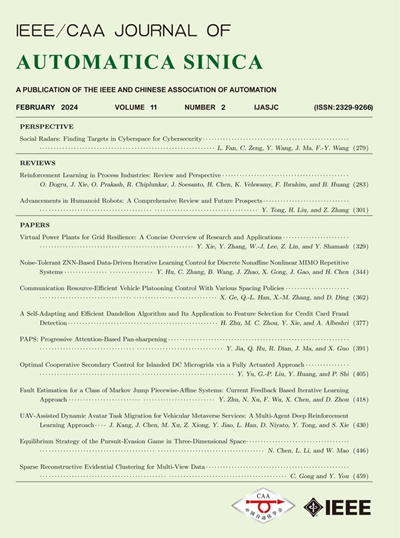Analysis of Students' Positive Emotion and Smile Intensity Using Sequence-Relative Key-Frame Labeling and Deep-Asymmetric Convolutional Neural Network
IF 19.2
1区 计算机科学
Q1 AUTOMATION & CONTROL SYSTEMS
引用次数: 0
Abstract
Positive emotional experiences can improve learning efficiency and cognitive ability, stimulate students' interest in learning, and improve teacher-student relationships. However, positive emotions in the classroom are primarily identified through teachers' observations and postclass questionnaires or interviews. The expression intensity of students, which is extremely important for fine-grained emotion analysis, is not considered. Hence, a novel method based on smile intensity estimation using sequence-relative key-frame labeling is presented. This method aims to recognize the positive emotion levels of a student in an end-to-end framework. First, the intensity label is generated robustly for each frame in the expression sequence based on the relative key frames to address the lack of annotations for smile intensity. Then, a deep-asymmetric convolutional neural network learns the expression model through dual neural networks, to enhance the stability of the network model and avoid the extreme attention region learned. Further, dual neural networks and the dual attention mechanism are integrated using the intensity label based on the relative key frames as the supervised information. Thus, diverse features are effectively extracted and subtle appearance differences between different smiles are perceived based on different perspectives. Finally, comparative experiments for the convergence speed, model-training parameters, confusion matrix, and classification probability are performed. The proposed method was applied to a real classroom scene to analyze the emotions of students. Numerous experiments validated that the proposed method is promising for analyzing the differences in the positive emotion of students while learning in a classroom.基于序列相关关键帧标记和深度不对称卷积神经网络的学生积极情绪和微笑强度分析
积极的情绪体验可以提高学习效率和认知能力,激发学生的学习兴趣,改善师生关系。然而,课堂上的积极情绪主要是通过教师的观察和课后问卷或访谈来确定的。没有考虑学生的表达强度,而这对于细粒度的情感分析是非常重要的。为此,提出了一种基于序列相关关键帧标记的微笑强度估计方法。该方法旨在以端到端的框架来识别学生的积极情绪水平。首先,基于相对关键帧对表情序列中的每一帧生成强度标签,解决微笑强度标注不足的问题;然后,深度非对称卷积神经网络通过对偶神经网络学习表达模型,增强网络模型的稳定性,避免学习到的极端注意区域。进一步,利用基于相关关键帧的强度标签作为监督信息,将双神经网络与双注意机制相结合。从而有效地提取出不同的特征,并基于不同的视角感知到不同微笑之间的细微外观差异。最后,进行了收敛速度、模型训练参数、混淆矩阵和分类概率的对比实验。将该方法应用于一个真实的课堂场景,分析学生的情绪。大量的实验证明,所提出的方法有望分析学生在课堂学习时积极情绪的差异。
本文章由计算机程序翻译,如有差异,请以英文原文为准。
求助全文
约1分钟内获得全文
求助全文
来源期刊

Ieee-Caa Journal of Automatica Sinica
Engineering-Control and Systems Engineering
CiteScore
23.50
自引率
11.00%
发文量
880
期刊介绍:
The IEEE/CAA Journal of Automatica Sinica is a reputable journal that publishes high-quality papers in English on original theoretical/experimental research and development in the field of automation. The journal covers a wide range of topics including automatic control, artificial intelligence and intelligent control, systems theory and engineering, pattern recognition and intelligent systems, automation engineering and applications, information processing and information systems, network-based automation, robotics, sensing and measurement, and navigation, guidance, and control.
Additionally, the journal is abstracted/indexed in several prominent databases including SCIE (Science Citation Index Expanded), EI (Engineering Index), Inspec, Scopus, SCImago, DBLP, CNKI (China National Knowledge Infrastructure), CSCD (Chinese Science Citation Database), and IEEE Xplore.
 求助内容:
求助内容: 应助结果提醒方式:
应助结果提醒方式:


